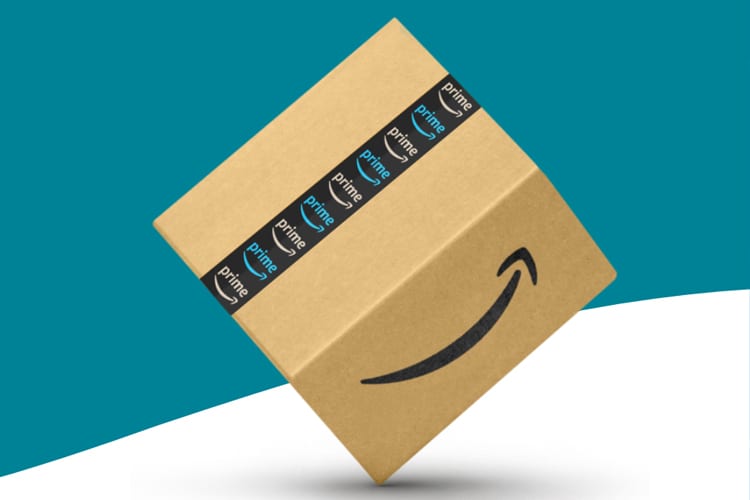Side Hustle: How to Sell On Amazon

Since its launch in 1994, Amazon has spent the last 26 years establishing itself as the premier online marketplace. There was a time when Amazon primarily sold books and not much else. In 2000, Amazon CEO Jeff Bezos told TIME that he planned to sell “Anything with a capital A,” and two decades later, it’s clear that Bezos knew what he was talking about.
However, while it’s easy to imagine Amazon as one massive corporate entity, many products you’ll find while online shopping comes from small businesses that sell on Amazon’s marketplace. There are more than 2.5 million registered sellers on Amazon, some of whom earn a serious living through Amazon. Roughly 200,000 sellers earn more than $100,000 annually through Amazon, and 25,000 make more than $1 million, according to Oberlo.
So how does selling on Amazon work, and who can register? Here’s a guide on setting up your own Amazon storefront and getting your goods in the most used marketplace on earth.
Before You Sell
You’ll need to consider and plan a few things before you even register as an Amazon seller. First off, consider the differences between Amazon’s two seller plans, “Individual” and “Professional.” An individual plan costs 99 cents per item sold but is a very barebones service. You can add items to the catalog and will get help from Amazon Fulfillment on orders, but that’s about all the help you get. The company recommends the individual plan for sellers that do not plan to use advanced marketing tools or sell more than 40 items per month.
The “Professional” option costs $39.99 per month but is much better equipped for sellers looking to build out a small business on Amazon. Professional sellers get access to advertising and promotional tools and an in-depth inventory manager interface and reports. While some selling categories are available to all users, professionals get access to more categories than individuals.
If you want to sell in any of these areas, you’ll need a professional account: Automotive Parts & Accessories; Business-to-Business products; Collectibles Coins; Fashion Jewelry; Fine Jewelry; Fine Art; Grocery, Food & Gourmet; Industrial & Scientific; Professional Services; Sports Collectibles; Video, DVD, & Blu-ray; and Watches.
In addition to the selling plan fees, Amazon has tons of fulfillment and sales fees associated with different products. For instance, the company takes 30 percent of luggage and travel supplies sales as a “referral fee.”
Amazon offers a sales margin calculator and a revenue calculator to help you understand your earnings before you commit to a selling plan.
See Also: Amazon is Holding a Virtual Conference For E-Commerce Sellers
Setting Up Your Store
The last thing you should do before launching your account is to consider your selling strategy in-depth. Do you want to build a brand through Amazon, offer unique items, or resell existing ones? These decisions will massively influence your selling experience, so take as much time as you need to prep before you launch your marketplace.
Now that you have your seller account and vision, it’s time to actually start stocking and selling. The seller interface lets you list items with photos, details, and prices. Once you’ve built out a product detail page for an item, it’ll go live on the marketplace listed with similar items. The images and descriptions you use will be key in attracting buyers, so make sure to write detailed notes and use high-resolution images.
Managing your prices is important too. Amazon offers tools like automatic repricing that will ensure your product prices stay competitive, and if you enable Fulfillment by Amazon, you can sell your items without shipping costs.
Selling and growing on Amazon can be tedious, but building a thriving marketplace takes time and effort. Over time, your success will build on itself. Great customer reviews on your items will help increase sales, bringing in more positive feedback, and boosting your visibility. Think of it like rolling a snowball down a hill: it takes a lot of energy to get going but can grow exponentially quickly.
Amazon offers a 10-point best practice guide for sellers that you can consult if you’re struggling to grow your business.
The Bottom Line
As mentioned above, selling on Amazon is very profitable for the best performers in the marketplace. The top one percent of sellers bring in more than $1 million annually, but not everyone finds that success.
Even smaller sellers can use the marketplace to build their brands and businesses. After all, it’s one of the most used websites in the world and can introduce your products to millions of potential buyers. While it may not make sense for everyone, selling on Amazon can be a profitable and productive business strategy.
Read More: 5 Pitfalls to Avoid When Starting Your Side Hustle










